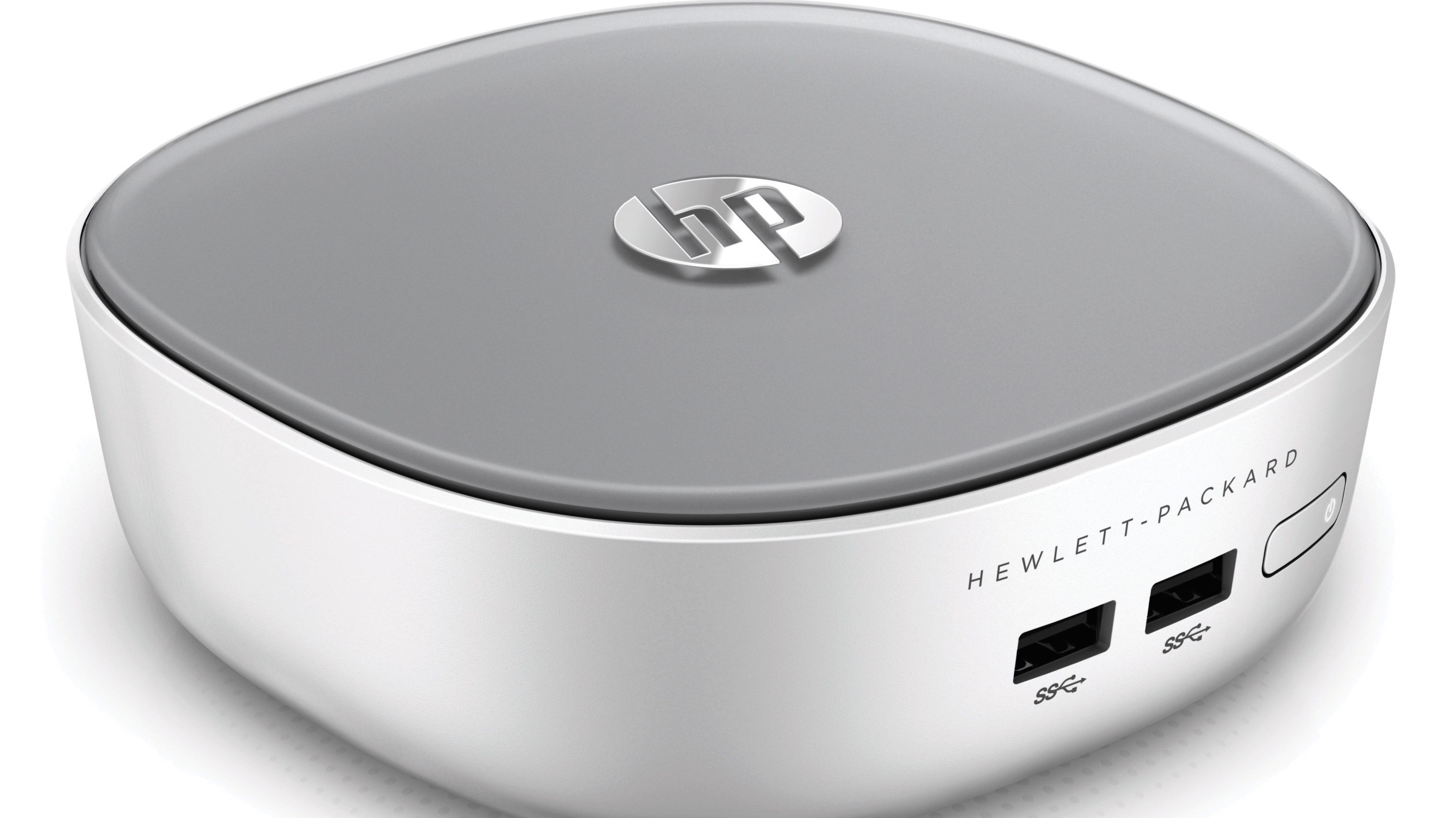HP Pavilion Mini Desktop can fit in the palm of your hand
Without sacrificing power

HP is out with a pair of petite desktops that will give your bulky PC a run for its money.
The Pavilion Mini Desktop and Stream Mini Desktop are sleek little things that don't skimp on power. You may mistake them for ornate paperweights save for their cable ports.
The Pavilion Mini is a measly 2.06-inches tall and weighs a precise 1.6 pounds; it's so small, it can fit in the palm of your hand. Windows 8.1 has its full support, and specs can reach up to an Intel Core i3 processor and 1TB storage. It also features up to 8GB of expandable memory.
Users will find dual displays fully supported thanks to a DisplayPort and HDMI compatible slots, and there are four USB ports. The little thing is no slouch; it can stream across multiple screens and to TVs with quad HD support and includes built-in Wi-Fi and Bluetooth.
Low on energy use, the Pavilion Mini only draws up to 45 watts compared to a typical tower PC's 250.
Available in Snow White, the Pavilion Mini starts at $319.99 (about £209, AU$395). Look for it in the US beginning January 14 at www.hpshopping.com and in retail locations on February 8. It along with the Stream Mini Desktop come bundled with a mouse and keyboard.
Stream on
Like its little compatriot, the Stream Mini Desktop features 32GB SSD plus 200GB of Microsoft OneDrive Storage for two years.
Sign up to the TechRadar Pro newsletter to get all the top news, opinion, features and guidance your business needs to succeed!
Pained in Cobalt Blue, the Stream Mini starts at $179.99 (about £117, AU$222) and includes a $25 gift card to the Windows Store. It has the same release date and retail location details as the Pavilion Mini.
- This and so much more is happening at CES 2015!
Michelle was previously a news editor at TechRadar, leading consumer tech news and reviews. Michelle is now a Content Strategist at Facebook. A versatile, highly effective content writer and skilled editor with a keen eye for detail, Michelle is a collaborative problem solver and covered everything from smartwatches and microprocessors to VR and self-driving cars.
